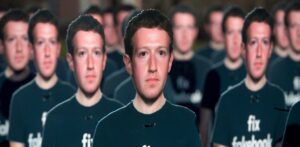A well-worn and tear-soaked origin story, vaguely reminiscent of biblical incarnation, tends to accompany press reporting on new fertility ventures. Once upon a time there was an ordinary Californian woman with great LinkedIn connections who was trying for some particular goal in the reproductive cycle but failing. Next, after a suitable period of baffled incomprehension at the limits life suddenly had placed upon her, she had the stunning realisation that her experience was shared by many others too. And lo, the idea for a particular new innovation was conceived! Lots of doors were closed in her face as she tried to find a home for her germinating idea, but eventually she overcame the odds, and gave birth to a bouncing biotech start-up.
Recent weeks have brought us two new and impressive examples of this genre. A New Yorker long read about the project of growing a near-identical breast milk substitute from human mammary cells relates the touching tale of Leila Strickland, a cell biologist at Stanford whose personal struggles with breastfeeding led to the formation of her company Biomilq. And within the pages of the Financial Times, we encountered Nicole Shanahan, ex-wife of Google co-founder Sergey Brin and CEO of an intellectual property software company in Silicon Valley. At the age of 31, Shanahan was having difficulties harvesting her eggs in order to freeze them for a future conception — the updated version of “was trying to have a baby but couldn’t”.
In a description that would sound impossibly neurotic were it not being uttered about someone with massive personal wealth, readers are told that she “was haunted by the fear that her life was being shaped by an organ that had been ageing before she was born” (namely, her ovaries). Attending a gathering in the home of a “Hollywood power couple” in 2017 and listening to a talk about the project of scientifically increasing human longevity, she idly swipes open her fertility tracking app and has “a moment of powerful insight”: why is nobody working on “reproductive longevity”? Or, in other words, how can we stop ovaries ageing so fast?
Several years later, and post-divorce from the Google bloke after an alleged (but denied) tryst with Elon Musk, the entrepreneur is still bankrolling academic research into this question on an epic scale. One study she funds is apparently looking at the potential of immunosuppressant drugs currently licensed for organ-transplant patients to delay menopause — if nothing else, a pleasingly symmetrical companion to the prescription of terrifying-sounding off-label drugs to delay puberty at the other end of things.
For some, it will be quite hard to get behind the supposed drama and nobility of Shanahan’s quest — to see her as we are implicitly encouraged to do, as a kind of brave pioneer or astronaut, wandering about in a mostly unknown realm — because this requires us to act like we don’t already know the answers to the questions she asks so urgently. As listed by the FT, these include: “Why are the ovaries one of the first organs to age? Why does the quantity and quality of eggs fall so dramatically? Why do humans go through menopause when so many animals do not?”
The truth is that evolution and natural selection have quite straightforward explanations; in fact, from that perspective, a much more puzzling question is why human females don’t die immediately after menopause, as so many other animals do. But then you realise that Shanahan and her researchers are totally uninterested in any answer that might position the female body as part of the natural world. When they ask “why…?”, all they really want to know is what mechanisms and environments immediately cause the limited shelf-life of human ovaries, so that they can then try to fiddle about with the process.
A different reporting trope in this area is to observe that if such-and-such reproductive problem was happening to men, modern medicine would have dealt with it already. True to form, in the story about Strickland’s ambitions for breast milk substitute, a food scientist is quoted as saying that, thanks to “middle-aged white men”, there has been little medical interest in lactation historically. In the story about Shanahan, meanwhile, we’re told that “while men were finding myriad ways to lengthen their own lives, barely anyone was researching how to slow ageing ovaries”.
Such clichés fit well with the feminist complaint that, due to sexism, the particularities of a woman’s body have been under-researched historically and are still poorly understood, relatively speaking. It is, of course, a fair objection — yet perhaps we should be careful what we wish for.
For the middle-aged men (and women) are now most definitely coming for the female physiognomy, and many of them have dollar and pound signs in their eyes. As such, it would be naïve to think these people have thought through all the consequences of whatever they are trying to sell us. Though Shanahan stresses that her own interest is not commercial, one Bloomberg article late last year estimated that the market for ovarian longevity drugs could reach $44 billion within the next decade. Similarly, a separate report from late last year suggested that “the global infant-formula market” is expected to be valued at “over $100 billion by 2032”.
It’s not hard to anticipate the appeal of such products, should they ever get off the ground properly. Nearly every new mother knows the hell of poor latching, mastitis and cracked nipples, and in my experience is keen to tell everyone else about it: I know I was. To a pregnant or would-be pregnant woman faced with such horror stories, having access to a near-identical breast milk substitute that you could pay for, should it all go wrong, might seem like a blessing. And to the woman not ready to face any of that terribly visceral stuff, but who still assumes they will want to get knocked up at some point, the existence of drugs apparently minimising the luck of the gestational draw in later years might seem a good thing too. In both cases, one assumes, there is a sense of prudentially shoring yourself up against the vicissitudes of biology; of running from capricious Mother Nature into the soothingly reliable arms of the market instead.
This flight from the perceived contingency of biology is obviously behind much of the appeal of so-called technological advances in fertility and reproduction: from the construction of artificial wombs to laser-assisted egg-hatching to AI’s predictive role in embryo selection and beyond. Viewed by prospective buyers, such developments would seem to raise your individual chances in the lottery of healthy baby-making; and who, you might think, could argue with that? A similar rationale makes a surrogacy arrangement desirable to some — except that in this case, another woman’s body now counts as a bit of the technological kit to be carefully tested first and then enhanced through suitable diet and exercise, in order to maximise the success of your aim.
Indeed, in her mostly absurd book Full Surrogacy Now, author Sophie Lewis argues for widespread surrogacy as the norm for reproduction, partly on the grounds of what she calls “the tragedy of worldly contingency”: the fact, for instance, that “[s]ometimes people can’t become mothers; sometimes mothers die; sometimes they don’t love their babies; sometimes they abort them, abuse them, abandon them, divorce their co-parent or even kill”.
This isn’t so much an aversion to biological luck as a rejection of the very existence of all luck in human projects, full stop. The underlying message seems to be that if an action or process can go wrong in any way, it therefore needs to be improved. And it might be easy to reject such thoughts as adolescent wailing about life’s unfairness, except that a similar motive seems to lie behind technological innovations these days that has ostensibly little to do with mediating biology. Viewed from one perspective, for instance, the appeal of a retreat into VR for some looks like an attempt to cut down the random haphazardness from real life. Why go visit a mountain when you can sit in your living room, experiencing a wraparound panorama of the same thing on your new Apple Vision Pro glasses? Choose what you see and hear, and what you don’t; surround yourself, in the words of the Apple Vision marketing team, in a “beautiful environment”, making your screen “feel 100 feet wide”.
But of course, you can’t get rid of radical contingency in this life, no matter what you do — all you can do is choose your preferred rollercoaster. Apple Vision Pro glasses will eventually malfunction. Selecting a surrogate still means you are at the mercy of what happens to her body, to the eventual baby, and to the human relationships involved afterwards. You can try to mitigate the unreliability of your breast milk by buying a substitute, but you can’t control the supply chain or the price point. And drugs can only help you play reproductive roulette for that bit longer. The problem is not technical, its existential — and there’s nothing a biotech start-up could ever produce that would solve it.
Disclaimer
Some of the posts we share are controversial and we do not necessarily agree with them in the whole extend. Sometimes we agree with the content or part of it but we do not agree with the narration or language. Nevertheless we find them somehow interesting, valuable and/or informative or we share them, because we strongly believe in freedom of speech, free press and journalism. We strongly encourage you to have a critical approach to all the content, do your own research and analysis to build your own opinion.
We would be glad to have your feedback.
Source: UnHerd Read the original article here: https://unherd.com/



